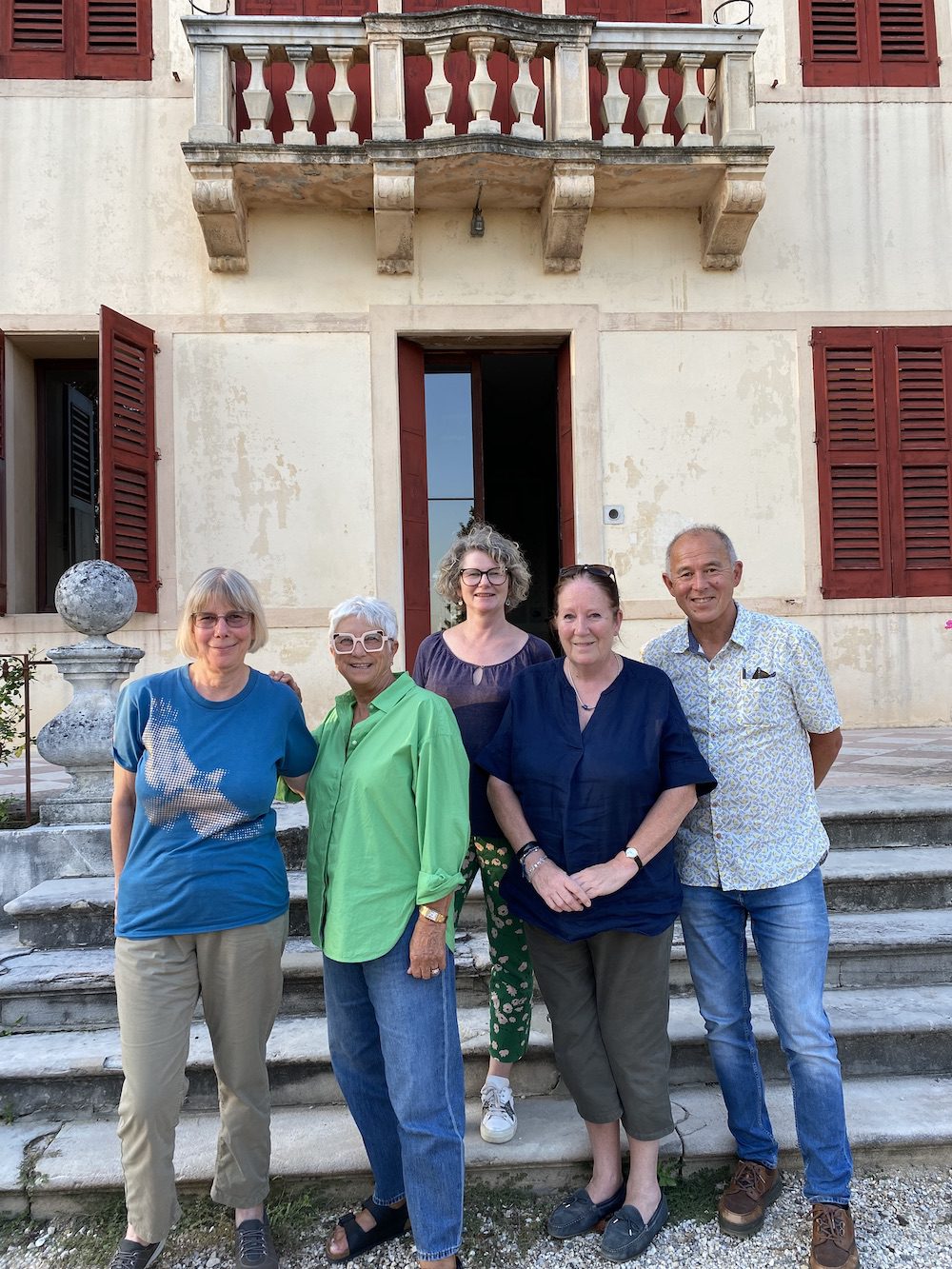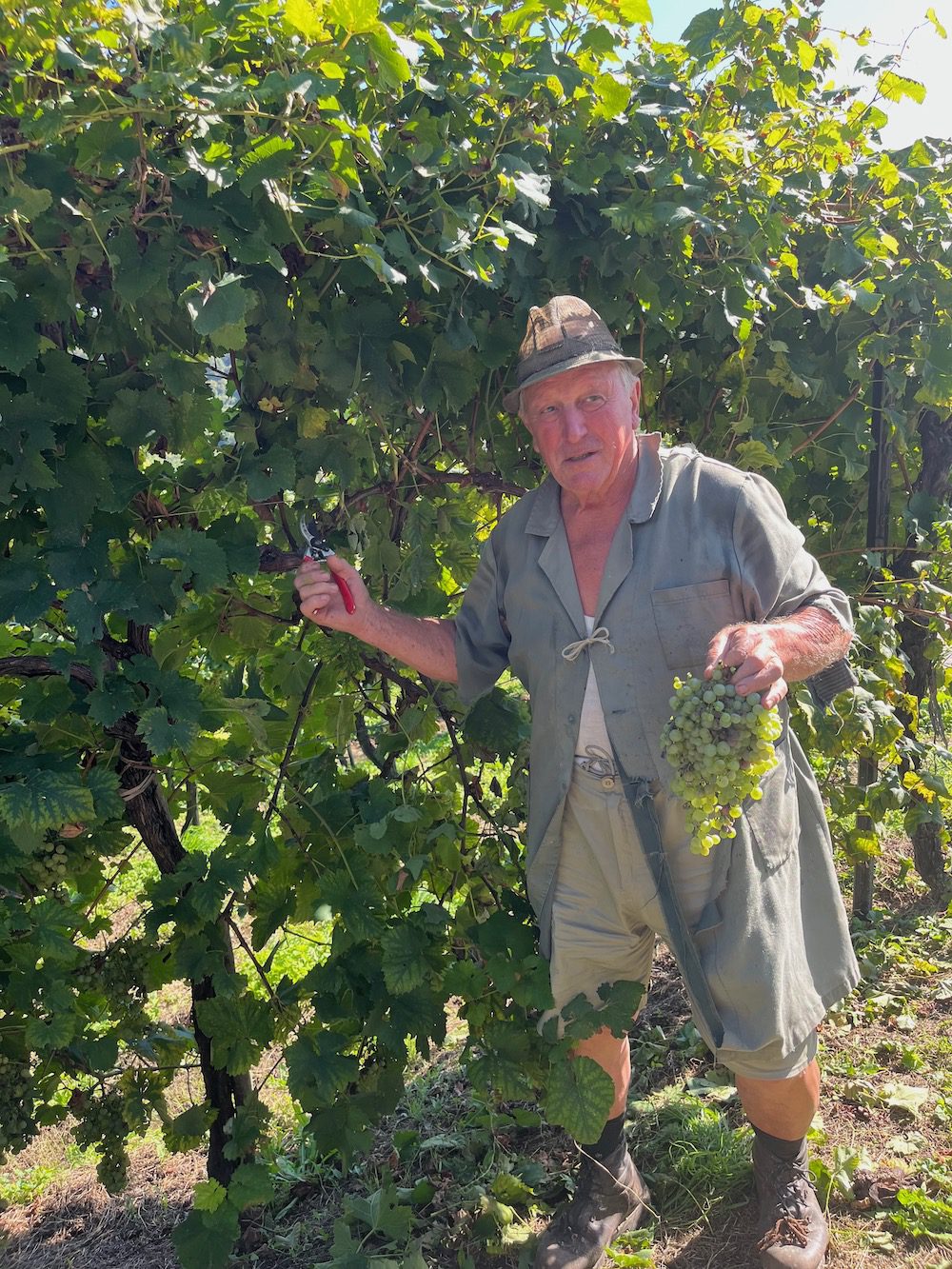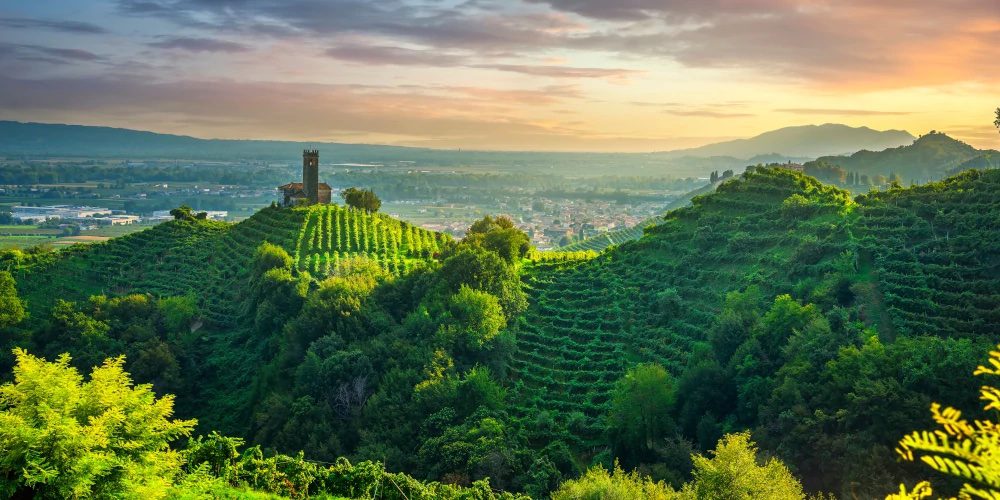Marc Millon rediscovers the joys of the now hugely famous sparkling DOCG that hails from hills that lie between Conegliano and Valdobbiadene. He encounters such complexity of terroir that different sub-zones and even single vineyards can express their own characters and personalities.
I first visited the wine hills between Conegliano and Valdobbiadene more than 40 years ago in search of a wine I’d encountered in a backstreet bar in Venice. It was called Prosecco, the name of both the wine and, at that time, also the grape, and it could be still, semi-sparkling or fully sparkling, and ranged from bone dry to medium-sweet.
Few then had heard of it, and it was by no means widely available outside of the Veneto, let alone Italy. In my book The Wine Roads of Europe, published in 1983, I wrote ‘Prosecco di Conegliano-Valdobbiadene is an important and distinguished wine, though much less well-known abroad than the wines from Verona, probably because the crafty Venetians drink all that they can get ahold of themselves.’ Hah! How the wine world has changed. Today, there are few wine lovers anywhere on earth who have not heard of or sampled and enjoyed Prosecco, one of the most popular sparkling wines in the world.
The runaway global success of the Prosecco boom has meant that, over the past 20-30 years or so, vast amounts of Glera vines (the grape name was changed from Prosecco to Glera in 2009) have now been planted across much of Veneto and Friuli-Venezia. The result has been a literal ocean of Prosecco DOC that has flooded export markets around the world, with the UK leading the way. In 2023, a staggering 612 million bottles of Prosecco DOC were produced.
It is reassuring to know, however, that the original hilly homeland of Prosecco that I had first visited some 40 years ago, located between Conegliano and Valdobbiadene, remains a very special world apart, the source of truly one of Italy’s greatest sparkling wines, Conegliano Valdobbiadene Prosecco Superiore DOCG. Yes, it’s a long mouthful of a name, but necessary to protect and to distinguish wines from this incredibly beautiful, UNESCO-cited wine land from the vast quantities of Prosecco DOC produced from grapes grown in vineyards beyond the classic heartland.
 I was able to discover and reacquaint myself with this special wine region on an educational trip organised by CWW committee member Michèle Shah, in the expert company of Sarah Abbott MW, and under the auspices of the Consorzio Tutela del Vino Conegliano Valdobbiadene Prosecco. Also on this trip were fellow CWW members Wink Lorch, Sue Eames, Heather Dougherty, as well as other wine professionals.
I was able to discover and reacquaint myself with this special wine region on an educational trip organised by CWW committee member Michèle Shah, in the expert company of Sarah Abbott MW, and under the auspices of the Consorzio Tutela del Vino Conegliano Valdobbiadene Prosecco. Also on this trip were fellow CWW members Wink Lorch, Sue Eames, Heather Dougherty, as well as other wine professionals.
Conegliano Valdobbiadene is truly a spectacular and beautiful wine land. We are some 70 kilometres north of Venice, in the foothills of the Alps, where a range of steep hills rises from the pianura – the plain – roughly between Conegliano in the east and Valdobbiadene in the west. The geological morphology of this area is known as ‘hogback’, that is, a narrow ridge and crest with steep slopes of nearly equal inclination running down both sides. These slopes have been shaped by human intervention, the steepest slopes carved over decades and centuries into grassy terraces called ciglioni to make the land cultivable, as well as to maintain soil integrity. This has allowed the sometimes-vertiginous slopes to be planted with vineyards, some with rows running vertically, others horizontally.
The terrain has thus been transformed into a veritable patchwork of vineyards interspersed with stretches of dense woods, wheat and other crops, and small villages, a beautiful natural landscape rich in biodiversity. ‘The hills of Conegliano and Valdobbiadene’ have now (since 2019) been officially recognised by UNESCO as a World Heritage Site with a citation that recognises the vital importance of human involvement in shaping the land itself: ‘For centuries, the harsh terrain has both shaped and been adapted by distinctive land use practices. They include the land and soil conservation techniques that comprise the viticultural practices using Glera grapes to produce the highest quality Prosecco wine… The main attributes of the property relate to the distinctive landscape, where nature and human history have shaped and been shaped by an adapted and specific system for viticulture and land use. Despite many changes, the attributes demonstrate authenticity, and are documented through sources such as inventories and cadasters, historical and religious paintings, and historical documents that demonstrate the introduction of the ciglioni, and the operation of the sharecropping system from the first land registries in the 18th century.’
 The contrast between this picturesque and historic landscape and the mainly flatter, more recently planted, and higher yielding vineyards of the pianura, where most Prosecco DOC comes from could not be greater. Nor is the difference just aesthetic. The number of manual labour hours needed to tend vineyards in the protected wine hills of Conegliagno Valdobbiadene Prosecco Superiore DOCG are around 600-800 per annum, compared to just 150 in the easier to mechanize vineyards of the flatter lands. In many cases, the sheer and extreme steepness of the terrain makes this truly heroic viticulture, immensely labour intensive and yielding considerably smaller quantities of grapes per hectare. Yet the efforts are more than worthwhile, for the resulting wines have greater concentrations of aroma precursors and scents and flavours that are truly reflective of this majestic and beautiful land.
The contrast between this picturesque and historic landscape and the mainly flatter, more recently planted, and higher yielding vineyards of the pianura, where most Prosecco DOC comes from could not be greater. Nor is the difference just aesthetic. The number of manual labour hours needed to tend vineyards in the protected wine hills of Conegliagno Valdobbiadene Prosecco Superiore DOCG are around 600-800 per annum, compared to just 150 in the easier to mechanize vineyards of the flatter lands. In many cases, the sheer and extreme steepness of the terrain makes this truly heroic viticulture, immensely labour intensive and yielding considerably smaller quantities of grapes per hectare. Yet the efforts are more than worthwhile, for the resulting wines have greater concentrations of aroma precursors and scents and flavours that are truly reflective of this majestic and beautiful land.
Indeed, though only a relatively small area, such is the complexity of terroir that different sub-zones and even single vineyards can express their own characters and personalities. Rive is the name given to these cru terroirs and indeed such single vineyard or sub-zone wines are the pinnacle of Prosecco Superiore DOCG from Conegliano Valdobbiadene. Diego Tomasi, the director of the consorzio, gave us a masterclass in understanding precisely how terroir, mesoclimate, exposure, and altitude are all critical factors that allow the wines to fully express their precise terroirs in the glass.
Cherishing Cartizze
Perhaps the greatest expression from this land is Cartizze, a sub-zone of just 107 hectares that lies on a steep and well-exposed hill between San Pietro di Barbozza, Santo Stefano, and Saccol, on the western flank not far from Valdobbiadene. This precious cru is owned and worked by more than 100 different producers and the wine that results is richer in concentration and aroma, with notes of ripe peaches and apricots, honey, and a sometimes slightly bitter almond finish. Though Cartizze is traditionally Dry, which paradoxically means sweet with between 17-32 grams of residual sugar per litre, producers are now also producing Brut (0-12 g/l) and Extra Brut (0-6 g/l) versions. Whatever the level of dryness or sweetness, Cartizze should always be a wine that is rich in flavour and aroma, beautifully balanced, elegant and with fine and persistent bubbles. No wonder that Cartizze is still one of the most popular sparkling wines for Italians celebrating the most special and precious moments of their lives.
We fell in love with Prosecco from Conegliano and Valdobbiadene when we first discovered it more than 40 years ago. Perhaps that love went just a little on the back burner over the decades when the rest of the world came to love a wine called Prosecco DOC. But thanks to Michèle and Sarah, and this excellently organised educational trip, I am now head-over-heels again, with a far deeper understanding and appreciation of a special, deeply beautiful, and heroic wine land, and of the quality, nuances, and indeed of all the effort that goes into the creation of a truly great sparkling wine: Conegliano Valdobbiadene Prosecco Superiore DOCG.
Marc Millon’s next book Italy in a Wineglass – the taste of history will be published by Hurst Publishers (London) on 18th April and Melville House (New York) on 21st May.

